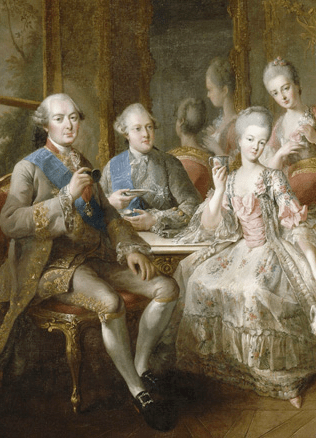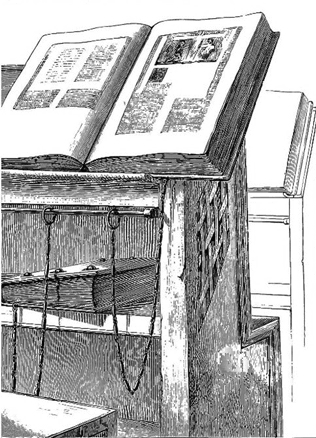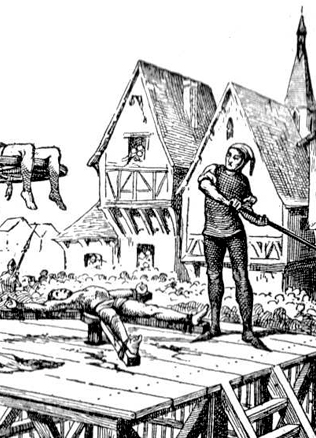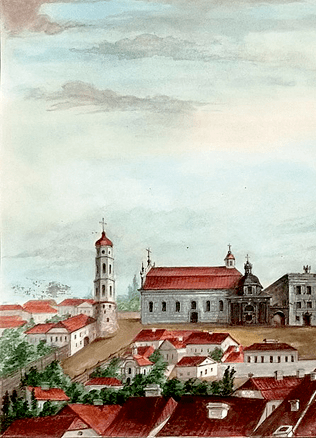Treasury of the Grand Duchy of Lithuania in the 16th-17th century
The history of the treasury of the Grand Duchy of Lithuania, as it is common to the state institutions, is slow and indolent. Perhaps it is not difficult to imagine that the treasury of the state did not determine the development of the state, sooner it was the other way around. Hence, the development of the treasury cannot be separated from that of the state. This link will not be revealed comprehensively if we shall not speak about the persons and institutions that controlled the treasury.
Some confusion exists about the terms used in the sources. If a treasurer seems to the present-day readers as occupying a higher position than a sub-treasurer, historically the conditions formed differently. A treasurer, as befits a nobleman, being further from the routine of the treasury of the state, lost part of his influence. Different receipts, proof of acquisition of the ruler’s assets, the office and archives of the treasury, which in today’s understanding was a bureaucratic mechanism surrounding the largest source of financial favours, was the sub-treasurer’s domain. And this domain was important not because of obvious military affairs represented in historical works. Sooner it was important due to all other kinds of wealth that was channelled from the treasury of the state into the hands of the noblemen at the turn of the 15th and the 16th centuries.
Financing of the war with the earnings of selling spoons
The noblemen in Lithuania received privileges from the rulers before the beginning of the 16th century, which exempt them from the taxes paid by the estates to the State. In 1566, they were exempt from the customs duties.
Abundant and wealthy aristocracy (and even a more abundant poor part of the noblemen) reduced the financial capabilities of the treasury efficiently.
It was only the state-owned estates, towns and some economic monopolies – production of alcohol and duties (rent of the customs) that filled the treasury. Local administration, which received the largest part of income from the estate instead of a salary, managed part of the state-owned estates as a perk of holding an office.
In due course this created a great difference between the financial and military capacities of the state and its senators. In 1568, the ruler had to support the hetman of Lithuania by allocating a huge amount of 34 083 shocks and 37 groats to his estates in Samogitia as assistance to the war against Livonia because there was a shortage of funds in the treasury. It is said that at the beginning of 17th century, Jan Karol Chodkiewicz sold his silver tableware to maintain the mercenary troops with which he won the battle of Kircholm (Salaspils). In the middle of the 17th century, when the state was threatened with disappearance, the Field Hetman of Lithuania Janusz Radziwiłł sent official letters instructing individual persons to form military units maintained by the state-owned estates. The cupbearer of Ukmergė district, for example, formed a regiment of 200 infantrymen which had to be maintained by the Larger and Minor Dirvėnai, Telšiai, Tryškiai, Biržinėnai and Karšuva holdings. On that occasion Paweł Sapieha hired a regiment of 3 000 (!) warriors at his own expense and sent to the border.
With salaries being delayed – a paid-for drinking spree
Do You Know?
At the beginning of the 17th century, when the treasury of the state was empty, Jan Karol Chodkiewicz is said to have sold his silver tableware to maintain the mercenary troops with which he won the battle of Kircholm (Salaspils) later.
The need for a standing army was growing, and the drawbacks of the conscript army started to come to light as early as the middle of the 16th century due to the constant war against Moscow. The main difference between these two types of armies was their financing: if the warriors of a conscript army of the noblemen managed to maintain themselves, the warriors of the standing army, for example, the garrisons on duty in Livonia or on the border, demanded to be paid salaries. The duty to pay them fell on the shoulders of the Great Hetman who asked the Ruler for money, and the latter had to withdraw it from the treasury. In the 16th century official letters were pouring from the Office of the Ruler stating that “the Elder of Vitebsk [or any other town – N.N.] was informed that the money to pay the garrisons for the year [15]61 had already been sent out […], not to let the garrison to disperse. We also order to allow the holder of an inn […] to pour drinks to the garrison of the castle free of charge as long as their salaries have been paid”. The same tone was used when demanding to collect taxes more efficiently from the towns, which had not paid them. The issues of taxes, recruiting the army were raised at the Sejms because the form of the state governance was turning towards nobiliary democracy. After the Union of Lublin in 1569, which approved the treasury of Lithuania that was separate from that of Poland, but joined the Sejms, it became an even more complicated problem.
Defence of the State out of charity of the nobility
Henry Valois was demanded, as the election condition, to cover Sigismund Augustus’ debts and to bring money in the treasury. Seeing that the matters of hiring the army and those of taxes take a long time, Stephen Báthory started to convene separate convocation of Lithuania at variance with the Union (gatherings, meetings of the Sejm) because the Lithuanians were more interested in the defence of the borders. However, the great possibilities of the state cannot be underestimated in those cases when its inhabitants agreed to pay new taxes. The decisions adopted at the Sejm on the taxes led to a disagreement in relational Sejmiks of the districts (which discussed the results of the Sejm), therefore, for example, in 1648–1649, only 1.17 million out of 1.5 million gold roubles was brought in the treasury. If we add personal contributions of the nobility (Vilnius Bishop, for example, added 100 000 golden roubles, which at that time would have been enough to build three or four military vessels) we shall receive the whole Lithuanian army of that time. The treasury was not omnipotent. The collected taxes were not enough to pay the army. Despite that the influence of the treasury, together with the hired contingency of the army, was on the increase. The war had positive consequences too. The treasury (almost empty) was always of great significance during the war. On the one hand, the tax system was reformed in the course of the war that lasted for twenty years. The land taxes (levied from Volok), which were in effect from the middle of the 16th century, in 1650 was replaced by the padūmė taxes. When the revenues of the treasury increased, the army grew – from 5 to 18 thousand. However, concentration of money in the society, even after duties had been introduced for the nobility, did not change, therefore the treasury of the state did not acquire more power. In 1655–1658, Paweł Sapieha alone hired more warriors at his own expense than the Lithuanian army had in 1648 – 8 000.
The treasury of Lithuania, which theoretically had to maintain the army of the Grand Duchy of Lithuania, was and remained one of several large players in the state, which, as it seems, urgently refused to centralise.
Literature: Antanas Tyla. Lietuvos Didžiosios Kunigaikštystės iždas per dvidešimtmetį karą (1648–1667). Vilnius: Lietuvos mokslo ir enciklopedijų leidybos centras, 2010.
Naglis Navakas



